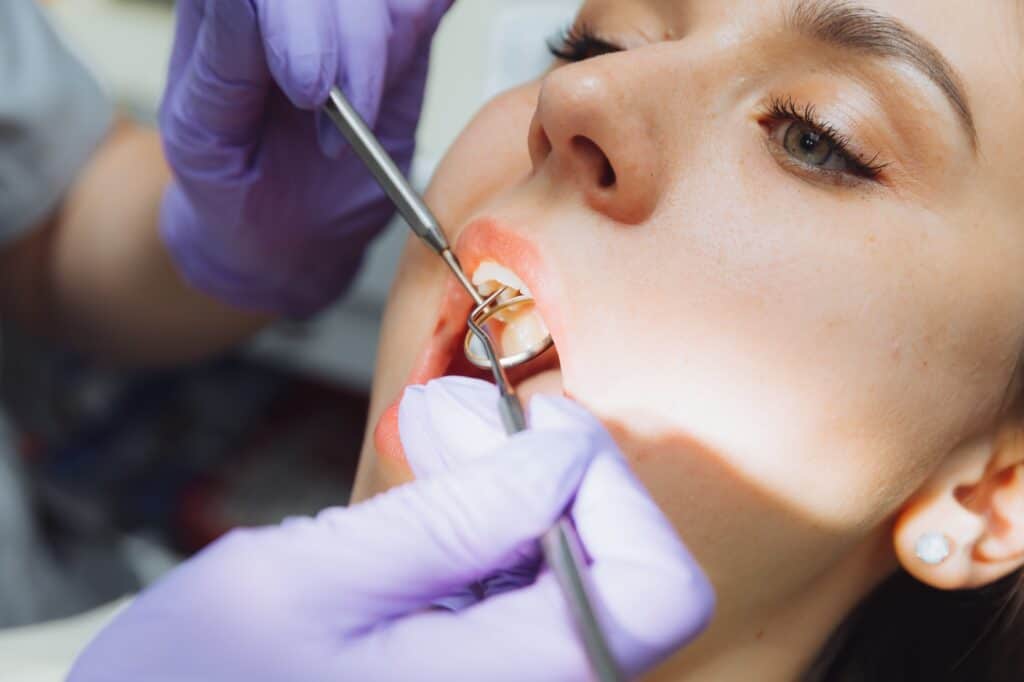14 Jan What to Know About Pulling a Tooth Under a Crown
Pulling a tooth that has a crown can sound intimidating. After all, crowns can protect and preserve teeth, so why would extraction be necessary? Issues like severe decay, damage, or infection sometimes make it unavoidable. Knowing what to expect when pulling a tooth under a crown can help ease your worries and prepare you for the process.
We’re here to guide you every step of the way, ensuring you feel confident and cared for. We’ll cover the reasons for tooth extraction under a crown, what to expect during and after the procedure, and some tips for caring for your mouth post-extraction.

Why Would a Crowned Tooth Need Extraction?
A crown serves as a strong cover for a tooth, but it doesn’t make the tooth beneath it invincible. Problems like advanced tooth decay under crowns or cracks in the tooth’s structure can result in the need for extraction.
Removing the affected tooth may be the best solution to protect your oral health if the damage extends below the gum line or threatens nearby teeth. In some cases, a tooth may also be extracted before placing a crown to ensure the restoration’s best fit and long-term success.
What If the Tooth Under the Crown Is Black?
Discovering that the tooth under the crown is black can be alarming. Discoloration often means there’s decay or infection beneath the crown. A blackened tooth indicates that the underlying tissue or structure has become compromised.
While it doesn’t always mean extraction is necessary, your dentist will assess the damage to decide the best action. Early diagnosis is key to preserving your smile.
Tooth Extraction After Root Canal and Crown
Considering a tooth extraction after a root canal and crown can feel frustrating. Root canals save a tooth by removing infected pulp, and crowns protect the tooth after the procedure.
However, roots can weaken over time, or decay can develop around the crown’s margin. If your tooth is beyond repair, your dentist may recommend an extraction by discussing replacement options like implants or bridges.

The Procedure for Pulling a Crowned Tooth
Extracting a crowned tooth is similar to a typical tooth extraction. Whether it’s a simple or surgical extraction depends on the condition of the crown and the tooth underneath.
- Evaluation: Your dentist will take X-rays to assess the tooth and surrounding structures.
- Anesthesia: A local anesthetic ensures you won’t feel pain during the procedure.
- Crown Removal (if needed): Special tools will be used if the crown needs to be removed to access the tooth.
- Extraction: The dentist will gently loosen the tooth and extract it. For cases involving deeply damaged teeth, a surgical approach may be necessary.
What Comes After the Extraction?
After pulling a crowned tooth, proper aftercare is essential for healing and planning the next steps for your smile. Here’s what you can expect post-extraction:
- Recovery: Mild swelling or soreness is normal. Ice packs and over-the-counter pain relievers can help.
- Replacement Options: Your dentist might recommend treatments like dental implants, bridges, or dentures to replace the missing tooth and restore function.
- Follow-Up: Attending follow-up visits ensures the area heals well and plans for restoration are on track.
Get Expert Dental Care with Drs. Jin & Jin
Experiencing a tooth extraction after a root canal and crown or dealing with issues like tooth decay under a crown can feel overwhelming. Nobody should have to go through this process without clear guidance or feel unsure about the choices ahead. At Drs. Jin & Jin Family Dentistry, we understand your concerns and are here to answer your questions with care and professionalism.
We provide comprehensive services to help you maintain a healthy and confident smile. Contact us today to schedule an exam and explore your options!
